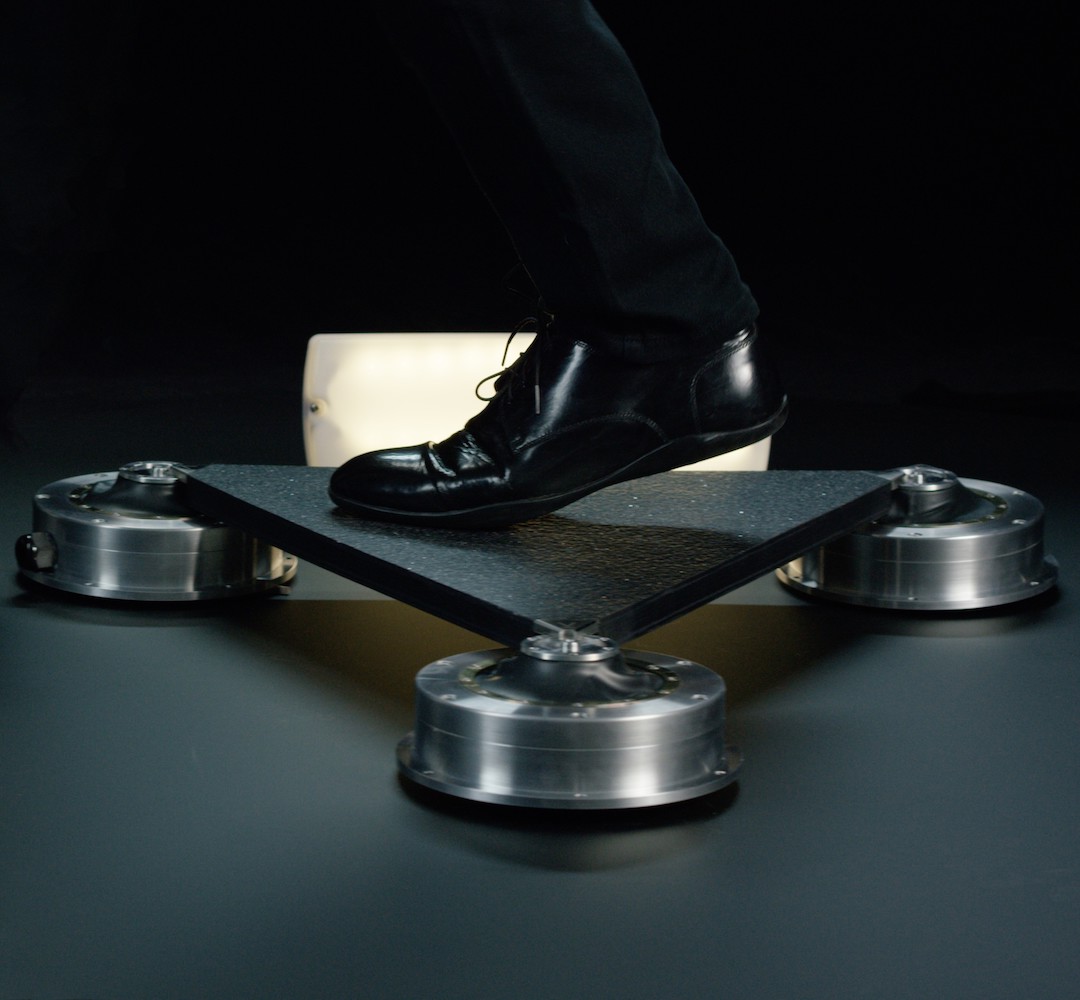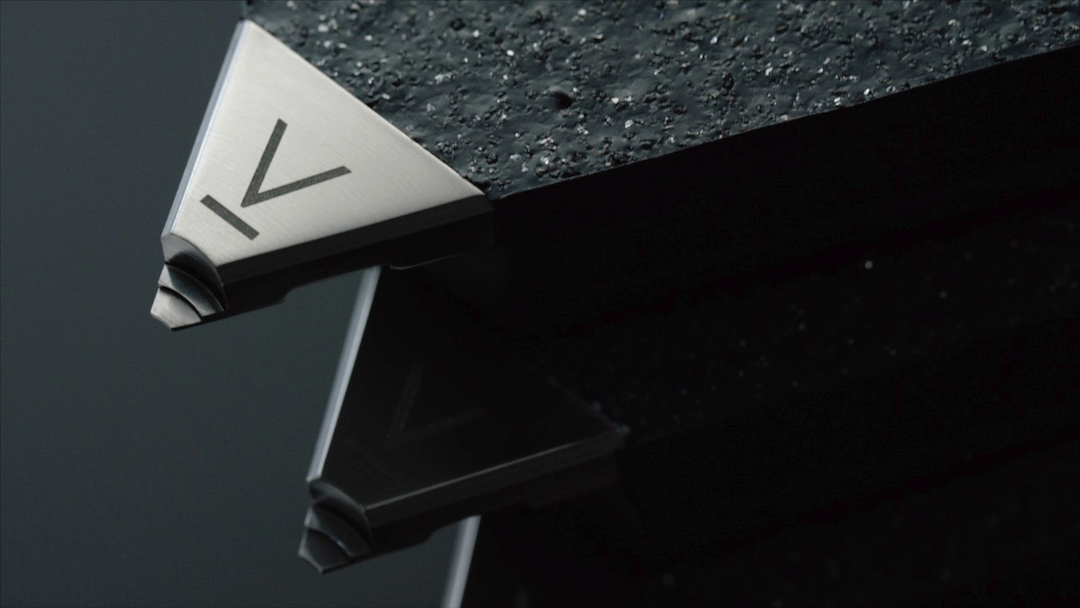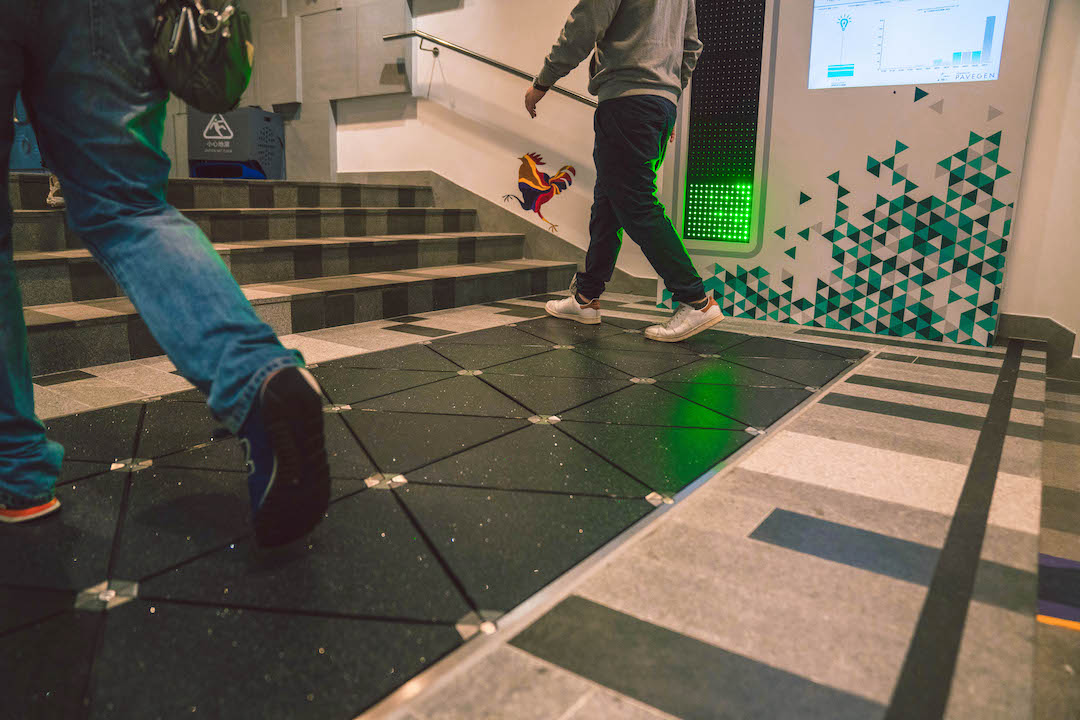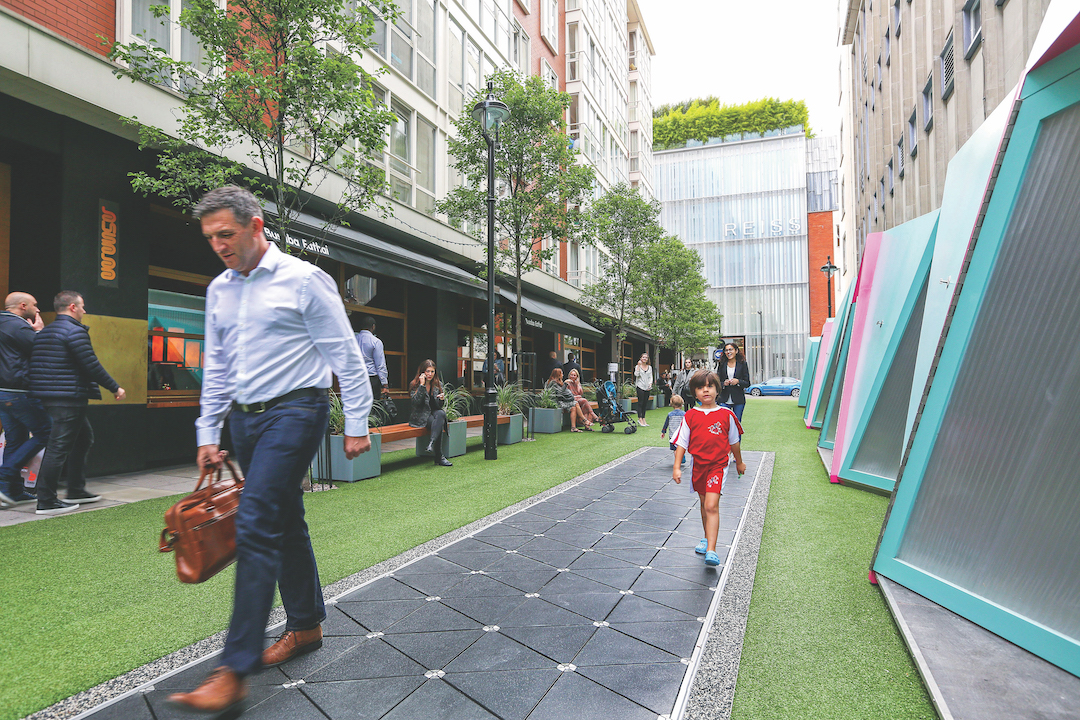You’ve heard of whistling while you work. What about energizing while you walk?
That’s the idea behind Pavegen, a flooring system that generates electrical energy with every step you take. This energy can then be used for powering LED lighting, capturing and transmitting data, and monitoring the environment.
The flooring consists of a series of triangular composite tiles. The triangular shape creates a continuously articulated surface with no dead zones so the system can capture energy from almost every footstep. Each of the triangles’ three corners rests atop an electromagnetic generator. When you step on the tile, the generators are compressed, producing two to four watt-seconds of off-grid electrical energy. The system can be used indoors or outdoors.
Because of the instant feedback, Pavegen creates high engagement with people that allows them to interact physically with sustainability, while providing smart cities, transport hubs, retailers, and brands with a unique source of data collection.
 Photo: Pavegen
Photo: Pavegen
Through the use of Bluetooth Low Energy beacons, Pavegen can also communicate with users’ smartphones to provide analytics data via a permission-based rewards system. Through the app, users will be able to see how many joules of energy they have created, how many steps they have taken on the Pavegen surface, and what that energy could have powered, such as seconds of light for a nearby LED installation. Pavegen refers to this triumvirate of powerful human engagement, instant physical feedback, and data and customer analytics as the “Internet of Beings.”
Among the company’s clients are the Abu Dhabi International Airport, Google, Siemens, Transport for London, and Urban Renewal Authority Hong Kong. In the Abu Dhabi International airport, a 16-sm Pavegen walkway between Terminals 1 and 3 collects footsteps from 8,000 travelers a day. The system tracks footfall data, powers lighting along the walkway, and shows how much energy is currently being harvested. It also has a game where children can power airplanes on a screen with the energy they are creating on the walkway.
There’s a Pavegen walkway in the University of Birmingham’s Green Heart, a high-tech outdoor recreation space designed by Churchman Landscape Architects. The university says it is the first school in the U.K. to have a Pavegen walkway.
The University of Birmingham’s Pavegen walkway resides among native flowers, wild plants, and 160 new trees. Data from the walkway is monitored via a cloud-based platform. The electricity it generates powers USB charging stations on nearby benches.
Pavegen has also been deployed at Bird Street, a forgotten side road off Oxford Street in London, to create what Pavegen calls the world’s first smart street. The energy generated is used to power bird sounds by day and lights at night.
 Photo: Pavegen
Photo: Pavegen
 Photo: Pavegen
Photo: Pavegen
Related Stories
AEC Tech | Feb 20, 2024
AI for construction: What kind of tool can artificial intelligence become for AEC teams?
Avoiding the hype and gathering good data are half the battle toward making artificial intelligence tools useful for performing design, operational, and jobsite tasks.
Sustainability | Nov 1, 2023
Researchers create building air leakage detection system using a camera in real time
Researchers at the U.S. Department of Energy’s Oak Ridge National Laboratory have developed a system that uses a camera to detect air leakage from buildings in real time.
75 Top Building Products | Aug 7, 2023
Enter today! BD+C's 75 Top Building Products for 2023
BD+C editors are now accepting submissions for the annual 75 Top Building Products awards. The winners will be featured in the November/December 2023 issue of Building Design+Construction.
Resiliency | Aug 7, 2023
Creative ways cities are seeking to beat urban heat gain
As temperatures in many areas hit record highs this summer, cities around the world are turning to creative solutions to cope with the heat. Here are several creative ways cities are seeking to beat urban heat gain.
AEC Innovators | Jun 15, 2023
Rogers-O'Brien Construction pilots wearables to reduce heat-related injuries on jobsites
Rogers-O'Brien Construction (RO) has launched a pilot program utilizing SafeGuard, a safety-as-a-service platform for real-time health and safety risk assessment. Non-invasive wearables connected to SafeGuard continuously monitor personnel to prevent heat exhaustion on jobsites, reducing the risk of related injuries. RO is the first general contractor to pilot this program.
Office Buildings | May 15, 2023
Sixteen-story office tower will use 40% less energy than an average NYC office building
This month marks the completion of a new 16-story office tower that is being promoted as New York City’s most sustainable office structure. That boast is backed by an innovative HVAC system that features geothermal wells, dedicated outdoor air system (DOAS) units, radiant heating and cooling, and a sophisticated control system to ensure that the elements work optimally together.
Design Innovation Report | Apr 27, 2023
BD+C's 2023 Design Innovation Report
Building Design+Construction’s Design Innovation Report presents projects, spaces, and initiatives—and the AEC professionals behind them—that push the boundaries of building design. This year, we feature four novel projects and one building science innovation.
Design Innovation Report | Apr 19, 2023
Reinforced concrete walls and fins stiffen and shade the National Bank of Kuwait skyscraper
When the National Bank of Kuwait first conceived its new headquarters more than a decade ago, it wanted to make a statement about passive design with a soaring tower that could withstand the extreme heat of Kuwait City, the country’s desert capital.
Design Innovation Report | Apr 19, 2023
HDR uses artificial intelligence tools to help design a vital health clinic in India
Architects from HDR worked pro bono with iKure, a technology-centric healthcare provider, to build a healthcare clinic in rural India.
3D Printing | Apr 11, 2023
University of Michigan’s DART Laboratory unveils Shell Wall—a concrete wall that’s lightweight and freeform 3D printed
The University of Michigan’s DART Laboratory has unveiled a new product called Shell Wall—which the organization describes as the first lightweight, freeform 3D printed and structurally reinforced concrete wall. The innovative product leverages DART Laboratory’s research and development on the use of 3D-printing technology to build structures that require less concrete.

















